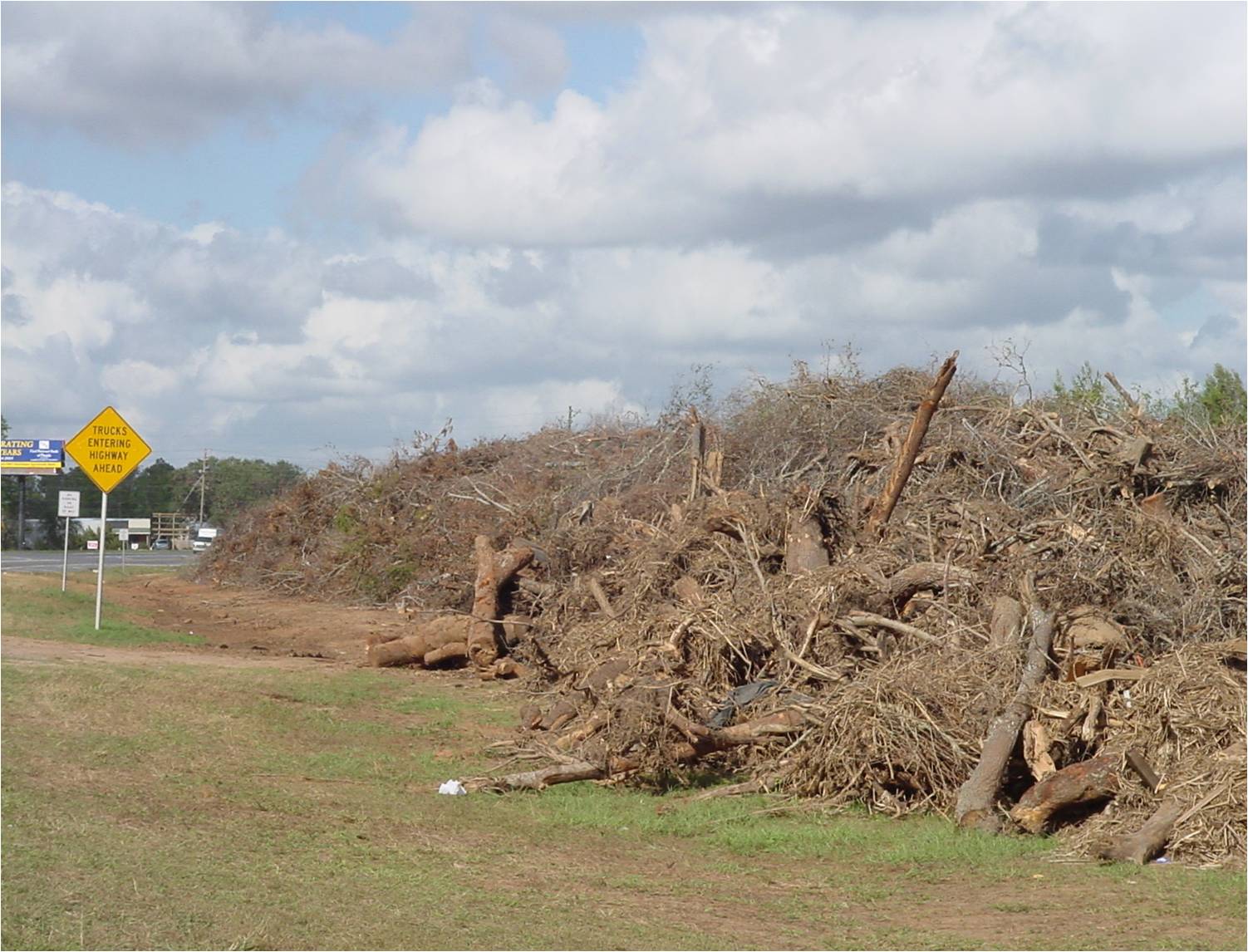
by Carrie Stevenson | Jul 29, 2013
Few things move a local homeowner into action faster than a big storm moving into the Gulf of Mexico. After filling up at gas stations and running out to home improvement stores, many start trimming limbs and removing trees.
The destructive tornadoes in the Midwest this spring may cause anxiety about having mature trees in a yard. It is true that falling trees and limbs can cause damage to a home and property. However, it is wise to look closely at a landscape before making a permanent decision. It’s also important to do this before the stress of a looming storm is at hand. Trees are very important for providing shade (i.e. energy savings), wildlife habitat, storm-water management, and maintaining property values.
University of Florida / IFAS researchers have done long-term studies on the effects of wind on trees and landscapes, and several important lessons stand out. Keep in mind that reducing storm damage often starts at the landscape design / planning stage!
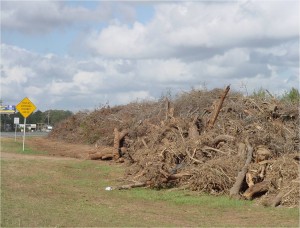
After a hurricane, piles of vegetative debris are common sights. Photo credit: Carrie Stevenson
Below are several tips for protecting your home and landscape in case of a storm.
- Plant high-quality trees with single trunks and strong branches. Branch attachment angles can affect whether a large branch will split from a tree. Branches angling straighter out from a tree (wide angles) are stronger than those pointing almost directly up (tight angles).
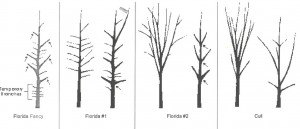
“Florida fancy” is the best quality of tree, with quality decreasing to “cull” level. Notice the difference in branch angles and direction between each group. Figure courtesy FDACS, Division of Plant Industry
- Trees that have had regular pruning are less likely to fail than neglected trees. The UF horticulture website has detailed information on correct pruning, or you can contact your County Extension Agent for tips.
- Post-hurricane studies in North Florida show that Live Oak, Southern magnolia, Sabal Palm, and Bald Cypress stand up well compared to other trees during hurricanes. Pecan, Water and Laurel Oak, Carolina Cherry Laurel and Sand Pine were among the least wind resistant. UF has a list of trees and their hurricane endurance based on a study conducted after the 2004 hurricane season.
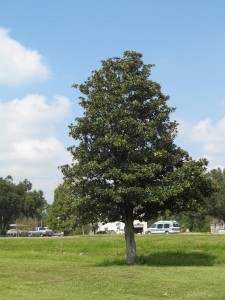
The classic Southern magnolia tree earns high marks in wind resistance. Photo credit: Carrie Stevenson
- Plant a variety of species, ages and layers of trees to maintain diversity in the yard and neighborhood.- Trees with decayed trunks are very dangerous in winds. Disease causing decay can come up from the roots or enter through improper pruning cuts. Remove hazard trees before the wind does. Have a certified arborist inspect trees for signs of disease and decay. They are trained to provide advice on tree health.
- Watch pines carefully. Sometimes there is hidden damage and the tree declines over time. Look for signs of stress or poor health, such as unusual dark stains or small holes on trunks, dropping leaves, or piles of sawdust at the tree’s base. Check closely for insects. Weakened pines may be more susceptible to beetles and diseases. Long-leaf pines often survive storms in our area better than other species.
- Trees in a group (at least five) blow down less frequently than single trees.
- Trees should always be given plenty of room for roots to grow. Roots absorb nutrients, but they are also the anchors for the tree. If large trees are planted without enough space for roots to grow out in all directions, there is a likelihood that the tree may fall during high winds.
- Construction activities within about 20 feet from the trunk of existing trees can cause the tree to blow over more than 10 years later.
- When a tree is removed or dies, plant a new one in its place.
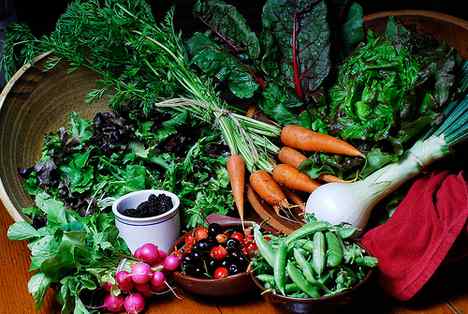
by Matthew Orwat | Jul 29, 2013
Announcing… an exciting local workshop coordinated and hosted by the FAMU State-Wide Small Farm Programs in collaboration with the Ekanlaunee Seed Exchange, Leon County Extension, and local small farmers
The 2013 Seed Workshop: Saving Seed, Saving Farms, Enabling Sustainability
Sunday, August 11, 2013 from 11:00 AM to 6:00 PM (EDT)
FAMU VITICULTURE & SMALL FRUIT RESEARCH CENTER
6505 Mahan Drive
Tallahassee, FL 32308
Sponsored by:
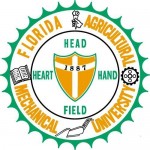
The 2013 Seed Workshop: Information Directly from FAMU
After 10 years of trying to work it out, FAMU is thrilled to be bringing the internationally-known US seed saving pioneer Ira Wallace of Southern Exposure Seed Exchange to Tallahassee to facilitate this capacity building workshop.
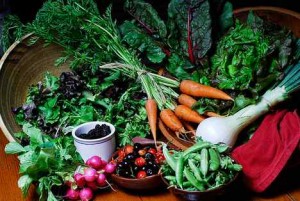
Image Credit: FAMU
The workshop will cover all kinds of seeds grown in the southeast region including greens, lettuce, eggplant, peppers, okra, peas, corn, cucumbers, melons, squash, herbs, beets, carrots, onions, parsnips, cabbage, broccoli, Brussels sprouts, kohlrabi, etc.
During FAMU’s hands-on workshop with Ira on “The Seed” you will learn:
What Is Seed?
Why Seed Saving Matters
Getting Started with Seed Saving
Fundamentals of Good Seed Saving (crossers and selfers, how to promote good seed set, how to maintain your crop’s genetics, isolation, population size and roguing, etc.)
Controlling Pests and Diseases
Dry and Wet Fermentation Seed Processing
Simple Seed Cleaning Techniques
Storage Techniques
The Business of Growing Seed for Farm and Sale
If you have seed you are trying to save that’s not listed, let us know and we will try to cover it too.
Register by credit card or check at: http://theseedworkshop2013.eventbrite.com/
Registration includes an organic lunch. To reserve a lunch with your workshop seat, please register by 11:55 PM Wednesday 7 AUG. Late registrations will be accepted as space permits — through Eventbrite until 11:55 Friday 9 AUG, and at the door on Sunday 11 AUG — but lunch cannot be guaranteed.
For questions about the workshop or registration, contact: Dr Jennifer Taylor, FAMU StateWide Small Farm Programs/Cooperative Extension, at FAMU.Register@gmail.com
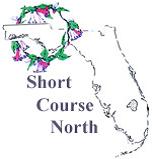
by Matthew Orwat | Jul 29, 2013
Short Course North 2013 “From Beaches to Woodlands”
 Date: August 8-9, 2013
Date: August 8-9, 2013- Daily Hours: 8 a.m.-4p.m.
- Sponsored by:
Friends of the Gardens of NW FL
Florida Federation of Garden Clubs, Inc.,
- University of Florida, IFAS
- For more info: Ttuttle1954@gmail.com
- Location: Santa Rosa County Extension Office 6263 Dogwood Drive, Milton, FL 32570
Topics of Study and hands-on activities will include:
- Snakes and Reptiles Scrub Habitat
- Gardening in Sandy Soil Coastal Concerns
- Florida’s Endangered Plant Advisory Council Long-leaf Pines
- Wildflower Research Invasive Plants and Exotics
- Using Native Plants in Designs Boondoggling
Come Learn, Come Buy, Come Win: Vendors, Plant/tool Sales, Auctions, Door Prizes, Raffle Baskets, Freebies!
by Matthew Orwat | Jul 28, 2013
Question of the Week. What is the name of this plant??? Please post your comments below. The answer will be revealed next week !
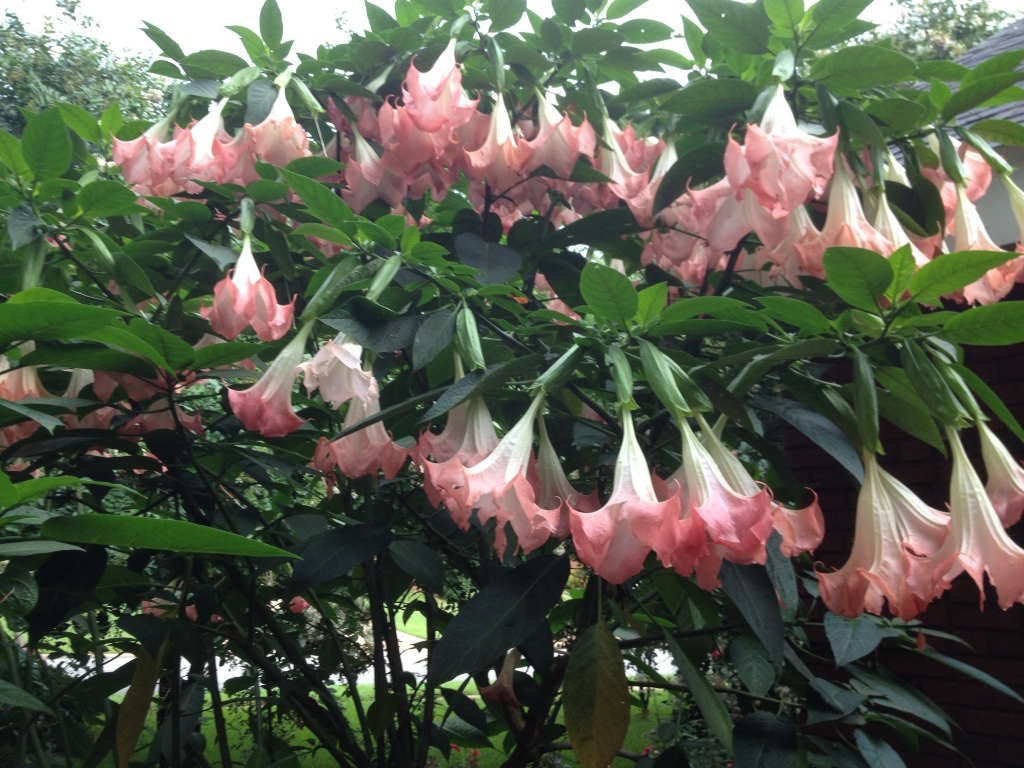
What it the name of this plant? Image Credit: Dr. Pete Vergot
The answer is Brugmansia spp.
Edward F. Gillman states in his publication:
“This small tree with large, 6- to 8-inch-long, simple leaves
makes a dramatic statement in any landscape. Reaching
perhaps to 15 feet tall, this densely foliated plant puts on a no
less than spectacular show when in full bloom in summer and
fall. Flowers hang from the stems and branches and drape the
plant with orange, white or yellow for a number of weeks.
Flowers can be up to 12 inches long.”
In Northwest Florida, this may die to the ground in the winter, and will need protection from extremely cold temperatures
It often will re-seed itself.
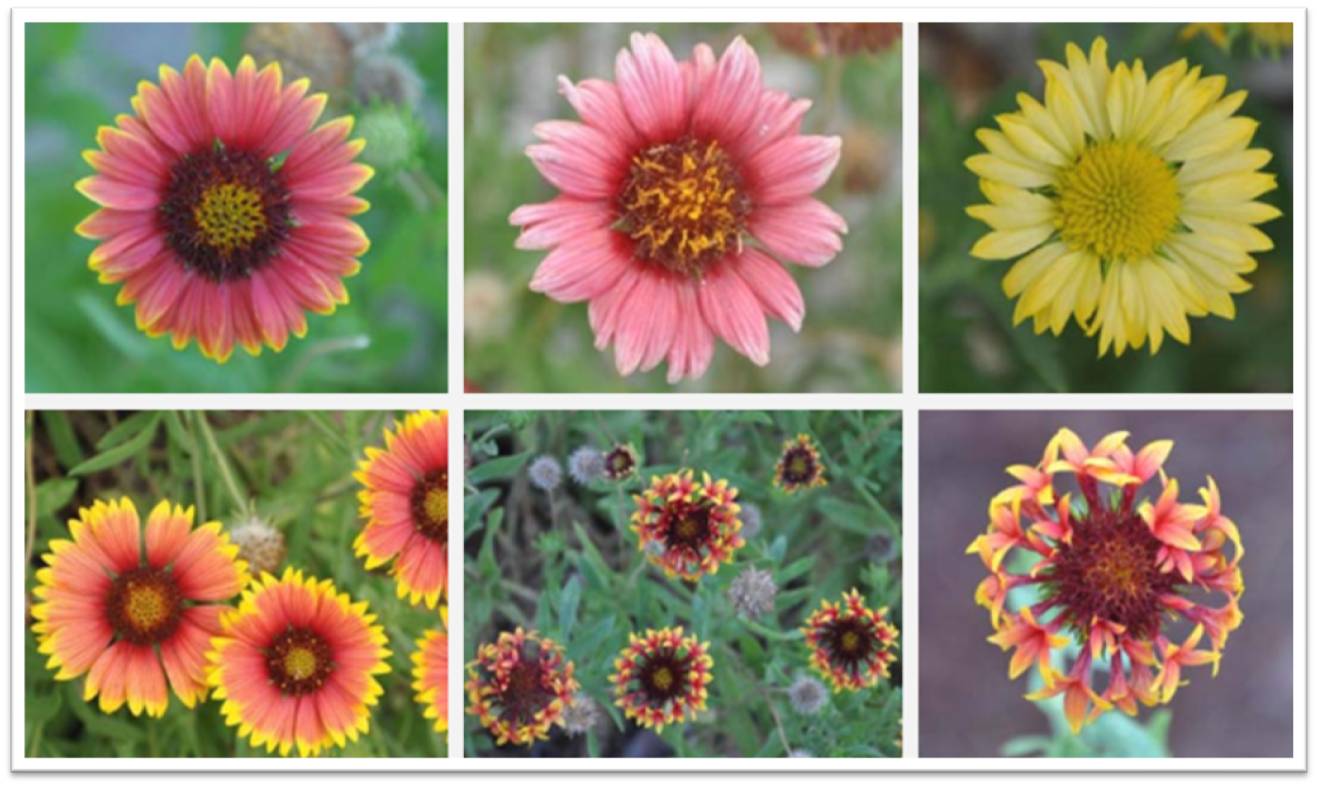
by Alex Bolques | Jul 22, 2013
Gaillardia is a favorite one of many wildflowers throughout the United States. It is a member of the Aster family, and is most commonly known as Indian Blanket or Blanket Flower. Individual plants can reach up to 2 feet high. They are heat and drought tolerant and, in Northwest Florida, flower from summer through fall.
The entrance to the Gadsden County Extension Office is flanked on either side by stands of Indian Blankets. Blooms are an array of red, orange, and yellow. While it may be rare to find a flower with the center cone and petals completely yellow or orange, they are evident in our garden. What most people find peculiar is appearance of tubular, trumpet-like, florets on the flower ray.
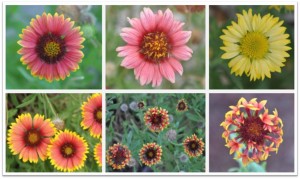
Gaillardia pulchella
The striking display of flower color Indian Blanket offers is not its only feature. It is also a source of nectar for many different butterfly species. Stephen Brown, a horticulture agent in Lee County Florida, has an excellent publication on Gaillardia pulchella that lists this plant species’ interesting attributes.
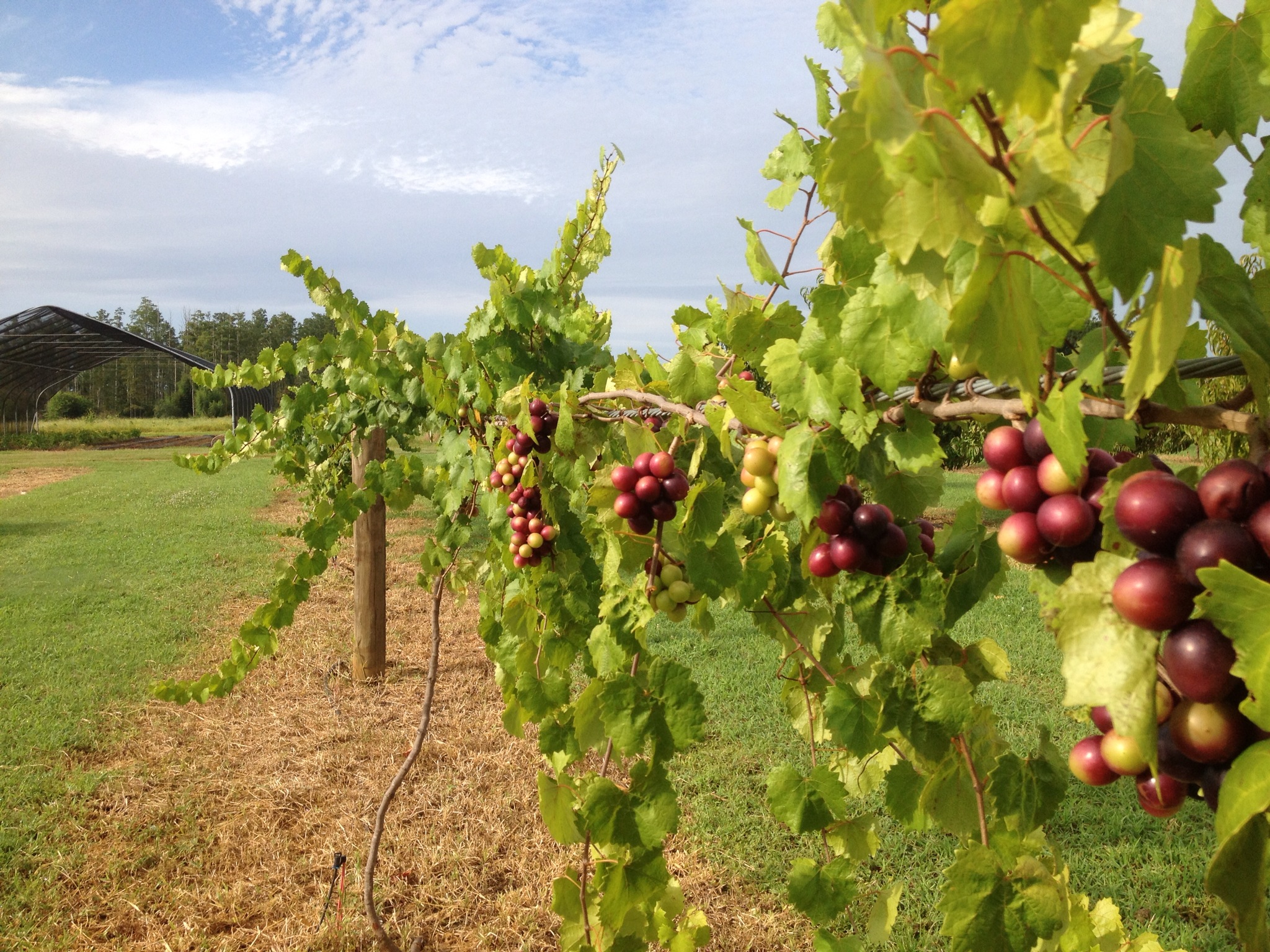
by Blake Thaxton | Jul 22, 2013
Fruit trees are a wonderful addition to the landscape at home or even a great niche for the small farmer.

Most people love the thought of picking fresh fruit off of the tree or vine and knowing exactly where it comes from. There are a lot of considerations that must be taken into account for a homeowner looking to spice up the landscape or the small farmer looking to diversify their operation.
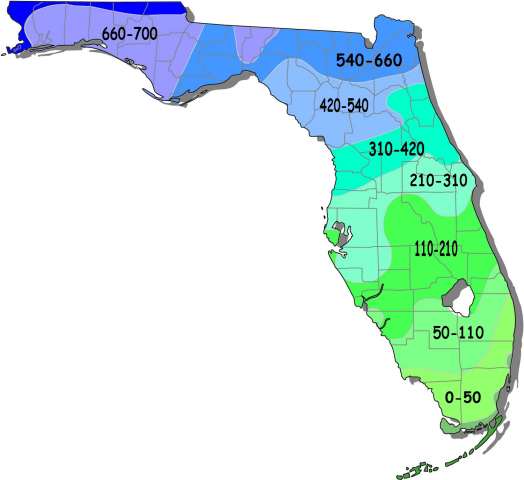 Chill Requirements:
Chill Requirements:
Deciduous trees have a chilling requirement in order to flower and produce fruit. Species and cultivars will have their own number of chill hours that must be met. Chill units are the estimated accumulative number of hours at 45°F or under during the dormant season. The Panhandle of Florida receives the most chill units in the state, therefore allowing more of a selection of fruit trees.
Disease Pressures:
Pecan, Peach/Nectarine, Plum, Bunch Grape, Apple, and Pear all have high disease pressures in the climate of the Florida Panhandle. Peach and Nectarine, for example, have a high number of necessary fungicide sprays required for high quality fruit. Mushroom root rot, peach scab, bacterial leaf spot, and brown rot are a few diseases of Peach and Nectarine. The other fruits mentioned have a similar list of disease problems that demand frequent and timely applications of fungicides.
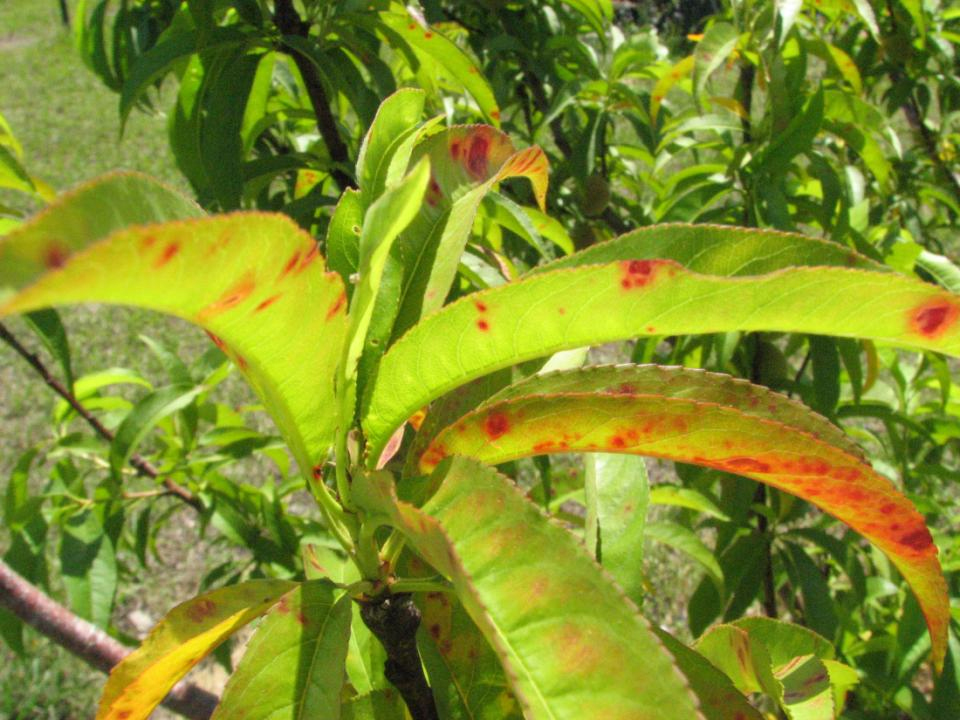
Peach tree affected by Bacterial Leaf Spot symptoms. Photo by G. England.
Along with disease pressures and chilling requirements, there are other factors that have to be taken into account before installing fruit trees in Northwest Florida. The sustainability of fruit trees in North Florida can be read about further in this UF/IFAS publication. In the publication, proper varieties and cultivars are listed for the fruit crops discussed. To learn more about fruit culture in Florida, please take a look at the following linked publications.
If questions arise about whether a certain fruit crop can be grown in the Florida Panhandle, contact your local extension agent.














